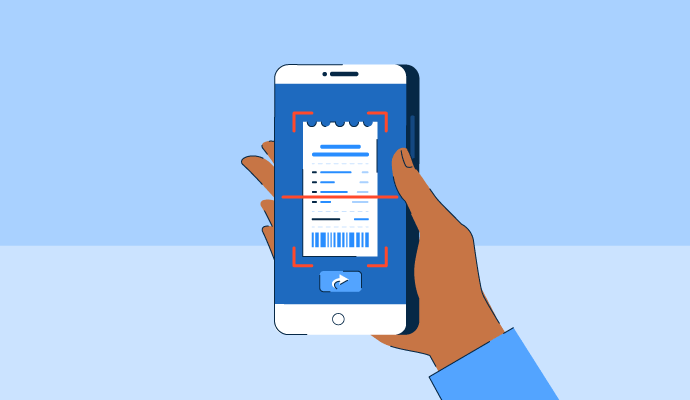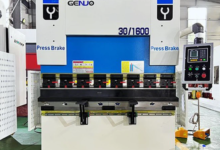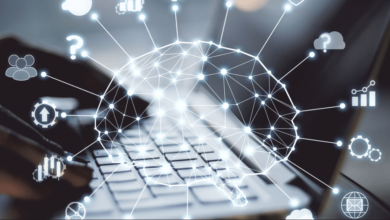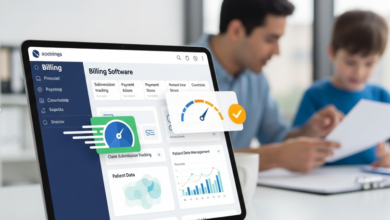The Role of OCR Scanning Software in Modern Digital Workflows

Efficient document management is essential to ensure smooth operations, regulatory compliance, and cost reduction. Whether it’s processing invoices, legal contracts, insurance claims, or tax returns, document workflows have traditionally been labor-intensive, prone to human errors, and time-consuming. As businesses seek ways to optimize their operations, ocr scanning software has emerged as a vital tool, revolutionizing how companies manage, process, and extract critical data from documents.
OCR (Optical Character Recognition) scanning software, powered by artificial intelligence (AI) and machine learning (ML), transforms the document processing workflow by automating data extraction and interpretation. It enables businesses to quickly convert scanned documents, PDFs, and even images into structured, searchable, and editable text. This process is faster, more accurate, and far less resource-intensive than traditional manual methods, making it an indispensable asset for modern enterprises.
How OCR Scanning Software Enhances Digital Workflows
OCR scanning software plays a central role in automating repetitive tasks and significantly boosting productivity. Here are some of the key ways OCR contributes to digital workflows across industries:
- Automated Data Extraction: OCR technology allows businesses to automatically extract key data from a wide range of documents, such as invoices, receipts, contracts, and tax forms. By transforming paper or scanned text into machine-readable data, OCR reduces the need for manual data entry, minimizing errors and enhancing accuracy.
- Streamlining Operations: Time is money, especially when processing large volumes of documents. OCR scanning software speeds up the process, reducing turnaround times and allowing employees to focus on more strategic, value-driven tasks. Whether it’s invoice processing or contract review, OCR cuts down the manual effort required to extract and verify data, allowing companies to handle documents faster.
- Improved Accuracy and Reduced Human Error: OCR eliminates the possibility of manual data entry errors, ensuring that the data extracted from documents is accurate and consistent. For example, in insurance, where policy details and claims require precision, OCR scanning software guarantees that the right data, such as claim amounts and dates, is captured without mistakes, helping avoid costly missteps.
- Seamless Integration with Existing Systems: OCR scanning software integrates seamlessly with other enterprise systems, such as Enterprise Resource Planning (ERP), Customer Relationship Management (CRM), and document management systems. By doing so, it enables businesses to create a unified and efficient document management ecosystem that automates workflows across departments, from HR to finance.
- Enhanced Searchability and Accessibility: Once documents are converted to machine-readable text, they become easily searchable, sortable, and accessible. OCR software indexes the data within documents, making it simple to find key terms, clauses, or information by simply searching for keywords. This greatly improves efficiency, especially when managing large document archives.
- Cost Efficiency: By automating the document review and data extraction process, businesses can significantly reduce the costs associated with manual labor, physical storage, and paper handling.
OCR Scanning Software in Key Industries
OCR scanning software is a versatile tool used across many industries, each benefiting from its speed, precision, and ability to integrate seamlessly into existing workflows. Here’s a look at how different sectors are utilizing OCR technology:
- Finance: The finance sector deals with high volumes of documents that require accurate extraction and processing. From invoices and tax returns to financial reports, OCR scanning software automates the extraction of critical data, enabling faster processing and improving accuracy. In addition, OCR helps finance teams meet compliance standards by ensuring that data is captured correctly and securely, thus reducing the risk of financial misreporting and fraud.
- Insurance: In the insurance industry, claim forms and policy documents often contain intricate details that must be accurately processed. OCR scanning software enables insurance companies to scan and extract data from these documents in real-time, reducing processing times and increasing customer satisfaction. AI-powered OCR can automatically detect missing fields in insurance claims, ensuring that all necessary information is included before submission, which helps prevent claims rejections or non-compliance issues.
- Legal: The legal industry generates a large volume of contracts, case files, briefs, and other documentation that must be processed and reviewed regularly. OCR scanning software is a game-changer for law firms and legal departments, automating the scanning of documents and the extraction of key clauses, dates, and legal terms. This technology drastically reduces the time spent on manual searches and ensures higher accuracy in legal document reviews, helping firms stay compliant with legal standards.
- Healthcare: In healthcare, managing patient records, medical forms, insurance claims, and consent documents is essential. OCR scanning software allows healthcare organizations to digitize patient records, making it easier to manage, access, and search through patient data. It can also help healthcare providers ensure HIPAA compliance by securely capturing and storing sensitive information from paper-based documents.
- Real Estate: Real estate firms handle a wide variety of contracts, deeds, agreements, and property documents. OCR scanning software enables these firms to quickly process and extract data from property contracts, improving efficiency in contract management and property transactions. Real estate professionals can also use OCR technology to identify critical terms in lease agreements, mortgage documents, and property titles, ensuring that important details are captured accurately.
Why Businesses Need OCR Scanning Software Today
In an era where data drives decision-making and business operations are becoming increasingly digital, OCR scanning software has become a necessity for modern enterprises. The need for speed, accuracy, and scalability in document processing is more critical than ever. Below are some key reasons why businesses must implement OCR scanning software:
- Adaptation to Digital Transformation: As businesses increasingly move towards digital operations, OCR scanning software enables organizations to transition from paper-based systems to digital workflows. This shift ensures that businesses remain competitive in an increasingly digital world.
- Enhanced Compliance: In highly regulated industries like finance, healthcare, and legal, compliance is a top priority. OCR scanning software helps businesses comply with industry regulations by accurately capturing and storing data from various documents, making it easier to retrieve information for audits and regulatory checks.
- Scalability: As businesses grow, so does the volume of documents they need to process. OCR scanning software scales with your organization, handling larger volumes of documents without the need for additional staff or manual intervention.
- Improved Customer Experience: By speeding up document processing and reducing errors, OCR scanning software enables businesses to provide faster, more efficient service to customers. Whether it’s processing insurance claims, legal contracts, or financial documents, customers benefit from quicker resolutions and accurate data.
The Future of OCR Scanning Software in Digital Workflows
The role of OCR scanning software is only set to expand as businesses continue to embrace digital transformation. With advancements in machine learning and artificial intelligence, OCR technology will continue to evolve, offering even more powerful features like handwriting recognition, advanced data categorization, and multi-language support.
As AI-driven OCR becomes smarter and more intuitive, it will enable businesses to automate more complex tasks, further streamlining document workflows and driving productivity. The future of OCR scanning software looks bright, and businesses that adopt this technology will have a clear advantage in efficiency, accuracy, and compliance.







